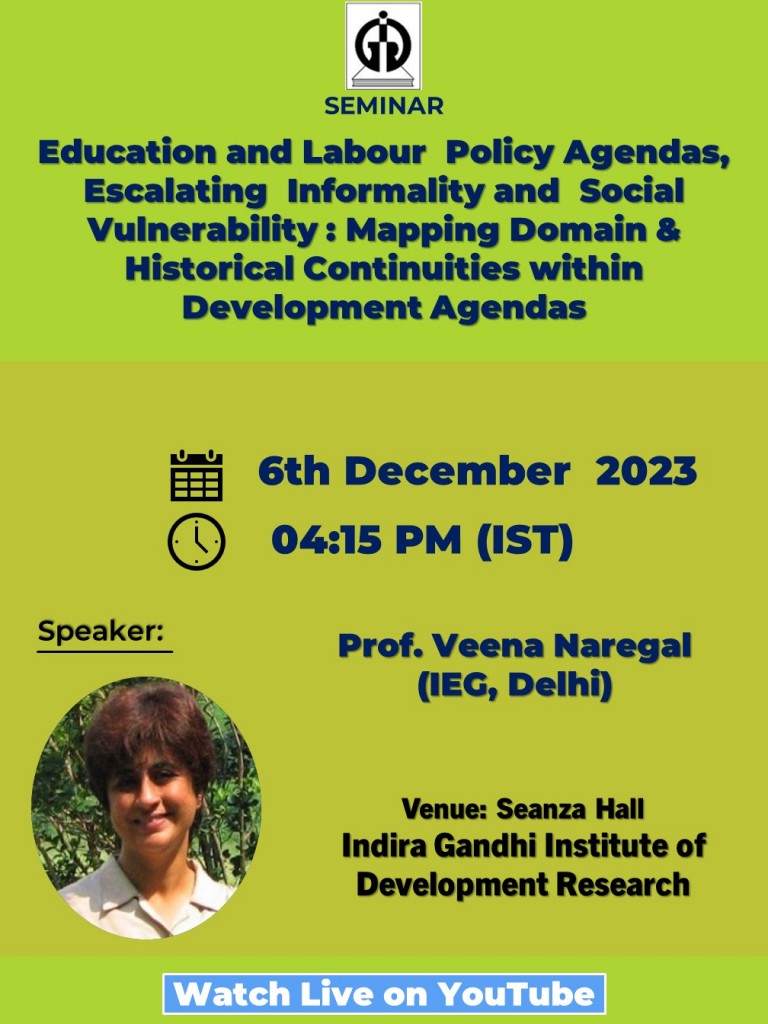Speaker: Prof. Veena Naregal (IEG, Delhi)
Venue: Seanza Hall
Abstract:-
For a while, India has topped the tables that classify economies according to the ‘degree’ and ‘intensity’ of their employment of informal labour. Equally the very large proportions of the Indian work force in vulnerable employment have been regarded as making for a distinctively Indian pattern of economic growth. Fronting the moot question, we ask: if economic planning and policy is mandated to assess parameters and priorities to create roadmaps for optimal and viable patterns of economic growth, surely policy analysis must also thematise how former policy choices and agendas were instrumental equally in producing subsequent structural patterns of the Indian growth story and labour market scenarios?
The dependence of more than 90% of our labour force in informal employment can be read as outcomes resulting from the priorities of India’s education and labour policy between 1950s and 2000s. Drawing on quantitative, comparative and historical sources, the paper throws light on choices leading to our distinctively ‘low-road’ strategy to economic growth through a dependence of more than 90% of our labour force in informal employment. The Nehruvian imaginary of social change saw a prioritising of higher education in the post-1947 decades. Endorsed by India’s policy-makers and intellectual elite, the sustained neglect of primary education until the 2000s significantly limited the size of the entry pool seeking access to higher education. However it had major implications for swelling the ranks of those in informal/precarious employment. Alongside from the late 1980s onwards, in contrast to its previous endorsement of tripartism and protection of organised labour rights, Indian labour policy discourse has sought to legitmise a deregulation of labour laws. Despite the traumatic migrant labour crisis of 2020, there have been persistent calls from industry lobbies to further reduce ‘over-rigidity’ of ‘unconducive’ labour laws.
Foregrounding such linkages, this paper argues for the importance of tracing such continuities trajectories and agendas across key fields of social policy as central to defining the indices of well-being and precarity for the Indian workforce.


